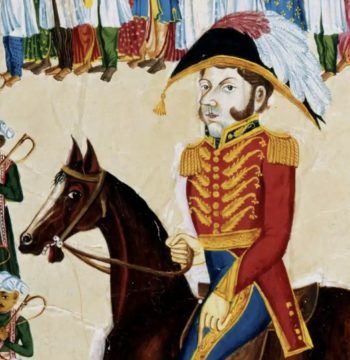Amartya Sen in The Guardian:
 The British empire in India was in effect established at the Battle of Plassey on 23 June 1757. The battle was swift, beginning at dawn and ending close to sunset. It was a normal monsoon day, with occasional rain in the mango groves at the town of Plassey, which is between Calcutta, where the British were based, and Murshidabad, the capital of the kingdom of Bengal. It was in those mango groves that the British forces faced the Nawab Siraj-ud-Doula’s army and convincingly defeated it.
The British empire in India was in effect established at the Battle of Plassey on 23 June 1757. The battle was swift, beginning at dawn and ending close to sunset. It was a normal monsoon day, with occasional rain in the mango groves at the town of Plassey, which is between Calcutta, where the British were based, and Murshidabad, the capital of the kingdom of Bengal. It was in those mango groves that the British forces faced the Nawab Siraj-ud-Doula’s army and convincingly defeated it.
British rule ended nearly 200 years later with Jawaharlal Nehru’s famous speech on India’s “tryst with destiny” at midnight on 14 August 1947. Two hundred years is a long time. What did the British achieve in India, and what did they fail to accomplish?
During my days as a student at a progressive school in West Bengal in the 1940s, these questions came into our discussion constantly. They remain important even today, not least because the British empire is often invoked in discussions about successful global governance. It has also been invoked to try to persuade the US to acknowledge its role as the pre-eminent imperial power in the world today: “Should the United States seek to shed – or to shoulder – the imperial load it has inherited?” the historian Niall Ferguson has asked. It is certainly an interesting question, and Ferguson is right to argue that it cannot be answered without an understanding of how the British empire rose and fell – and what it managed to do.
More here.
